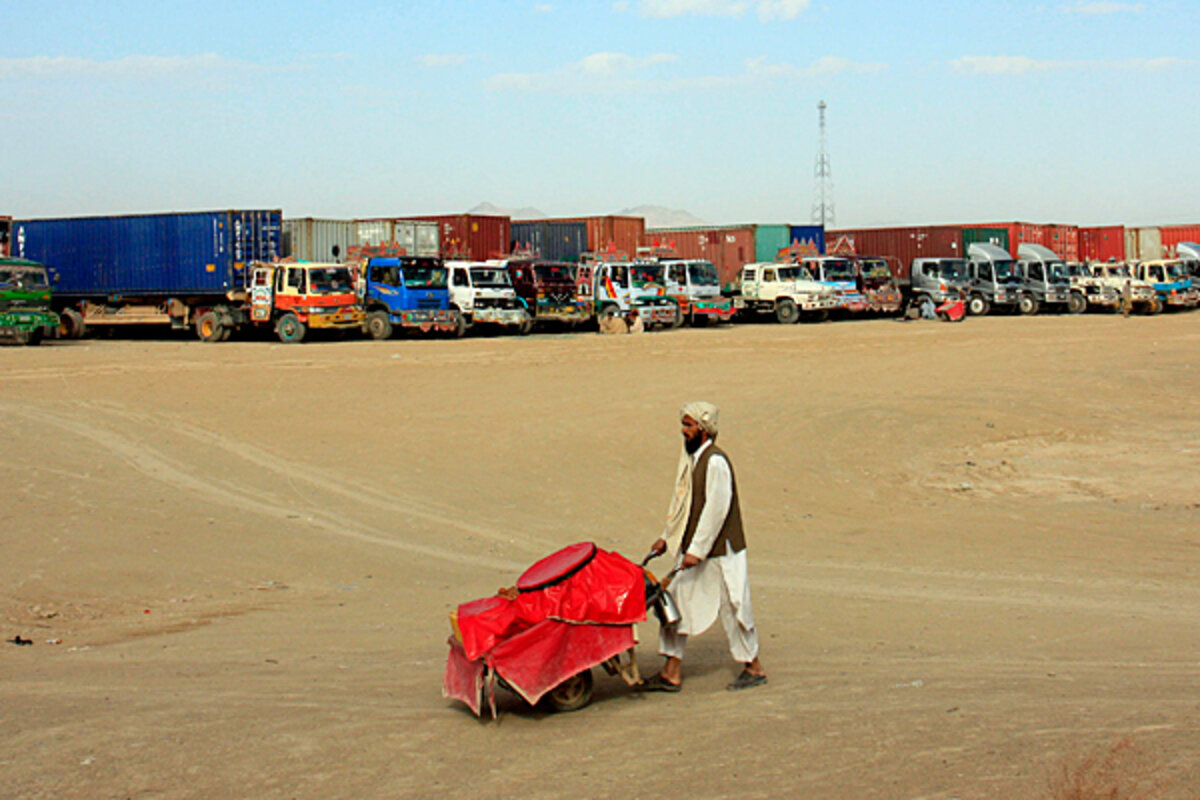Pakistan cuts supply lines, but US has options
Loading...
Even before Pakistan closed its border to NATO and US military supply trucks – following a US incursion that killed 24 Pakistani soldiers – the US military had begun the painstaking effort of reducing its reliance on Pakistan to supply its forces in Afghanistan.
In 2009, the US military received 90 percent of its non-military supplies – food, fuel, toiletries, etc. – through the Pakistani port city of Karachi. Tens of thousands of shipping containers were then trucked up through the Pakistani border towns of Chaman and Landi Kotal into Afghanistan. Today, the up to a Northern Distribution Network, coming through Russia and several other former Soviet republics. The Pentagon hopes to increase that overall traffic to 75 percent by the end of this year. The Pakistani shutdown could speed up that process.
that of the Pakistan route, according to a story on Firstpost.com. But the Northern route is still cheaper than air drops, which cost the US military as much as $14,000 per ton.
The Northern route relies on a number of – Latvia, Estonia, and Lithuania on the Baltic Sea, and Georgia on the Black Sea – as the initial landing spot for the US military’s supplies. On the Latvian route, cargo is carried by truck and train through Russia, and then trucked onward through Kazakhstan and Uzbekistan before entering Afghanistan at the border post of Termez. The Georgian route avoids Russia, crossing into Azerbaijan, crossing the Caspian Sea into Kazakhstan, and then down through Uzbekistan before reaching Afghanistan.
Officially, Pakistan has voiced its frustration at the amount of US military materiel that is shipped across its territory into Afghanistan, but Pakistan also receives millions of dollars in tariff revenues for the use of its ports and roads. American military’s surge and drawdown of forces in Afghanistan mean that percent. Now much of that tariff revenue will be diverted up to Latvia, Russia, Kazakhstan, Georgia, Azerbaijan, and Uzbekistan. Pakistan’s government and its many transport firms stand to lose $100 million a year from the US military’s shift to a northern route.
Even if the US military was entirely reliant on Pakistan for its logistics train, the US Army, by policy, maintains a in Afghanistan, Pentagon spokesmen say. This means that US troops on the ground would be able to continue their operations, and remain insulated from the logistics or diplomatic problems that are endemic to Pakistan.
In contrast to the US military, NATO is much more reliant on Pakistan for its supply network, continuing to receive 60 percent of its supplies through Karachi. Presumably, NATO planners will shift their supply chain north as well, although the US government has signed agreements over the past year to do so, and NATO – which was created to put the Soviet Union out of business – has not.
[ Video is no longer available. ]




